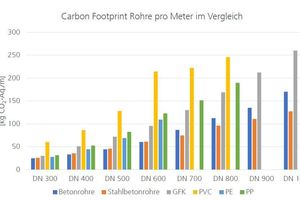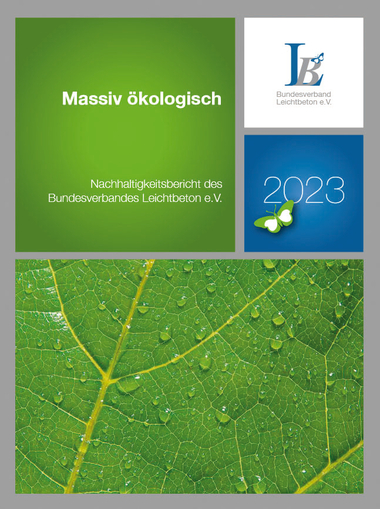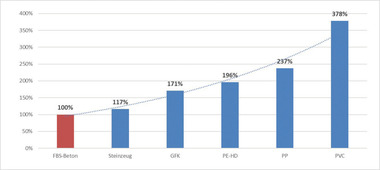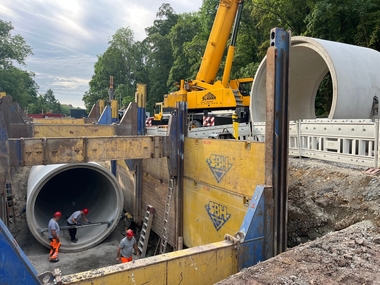Climate protection and climate-adapted construction
using precast elements in civil engineering
Building with concrete has been the subject of critical media coverage ever since the climate policy debate began. Its share of global carbon emissions is relatively high at up to 8 % owing to the energy-intensive cement production process. Yet concrete is an indispensable construction material and will thus continue to be of major importance in the future. Concrete and reinforced concrete are the materials most widely used for pipes and manholes installed as part of the public sewer and wastewater treatment infrastructure, accounting for about 40 % of all systems – and this share is increasing further.
More thorough climate policy discussions primarily guided by carbon emissions have triggered a far-reaching transformation process in the cement and concrete industry, which is why the focus has been set on reducing the environmental impact of building materials, among other activities. Public requests for proposals increasingly specify these requirements – reason enough to compare the environmental impact of concrete pipes with alternative materials in order to refute the arguments supporting the claim that “concrete kills our climate” on the basis of specific figures.
In cooperation with two research institutions, the German Association for Concrete and Reinforced Concrete Pipes (Fachvereinigung Betonrohre und Stahlbetonrohre e. V.) has had the carbon footprints of sewer materials calculated. Using publicly accessible, verified environmental product data (EPD) published in the database maintained by the Federal Ministry of Housing, Urban Development and Building, the environmental impact of materials can be compared, primarily focusing on the CO2 equivalents caused and the energy input needed in different phases of the life cycle. In addition, a tool will be presented that uses the above data and thus makes it possible for the first time for designers and decision-makers to view and compare the carbon footprints of different materials.
In conclusion, concrete can be classified as a sustainable material due to its low carbon footprint. Going forward, it will undergo further modifications that will again reduce its environmental impact. In the long term, concrete will thus remain an indispensable construction material that can make quite an important contribution to protecting our climate and implementing climate-adapted construction methods.







